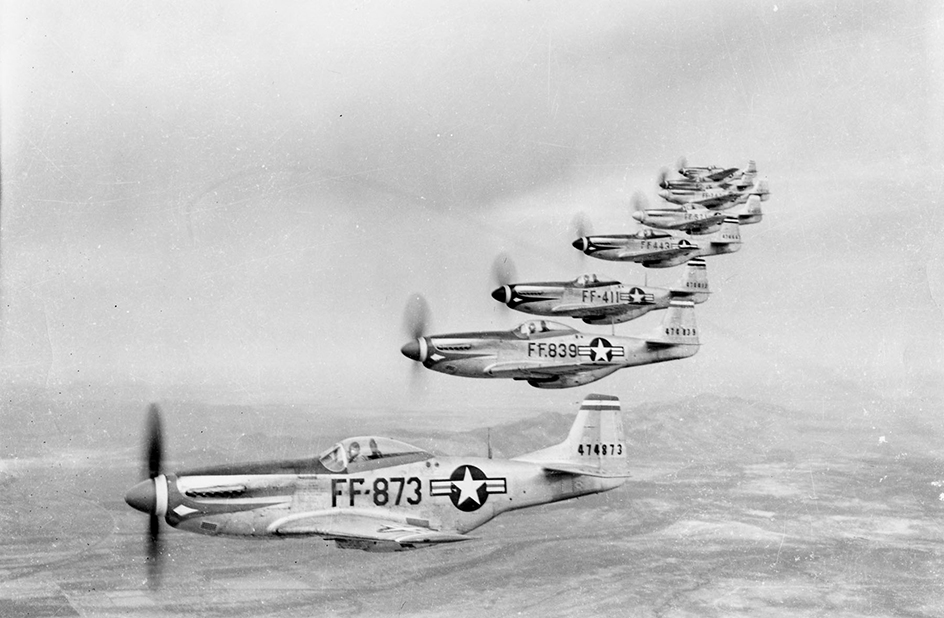P-51 Mustang was a military airplane used by the United States and its allies during World War II (1939-1945) and the Korean War (1950-1953). The P-51 was a single-engine fighter (fast-flying airplane with weapons) designed by North American Aviation. At that time, P was the U.S. Army’s designation for a pursuit (fighter) plane. The P-51 was one of the most famous fighters of World War II.

Most P-51’s carried one pilot and six heavy machine guns, as well as rockets or bombs for surface attacks. A Rolls-Royce Merlin engine gave it a top speed of about 450 miles (724 kilometers) per hour. The P-51 had a maximum altitude around 42,000 feet (12,800 meters). Its range was about 1,000 miles (1,600 kilometers). Drop tanks—exterior fuel tanks attached beneath the plane’s body—could double this range. Mustang pilots sat beneath a “teardrop” bubble canopy. This streamlined glass canopy allowed for improved vision.
North American tested a prototype of the P-51 in 1940. The fighters entered combat in the United Kingdom’s Royal Air Force in 1942 and with the U.S. Army Air Forces in 1943. Some early versions of the plane were specially designed for ground attack under the name A-36 Apache. Later Mustangs were mainly used for air-to-air combat.
P-51’s fought on every front during World War II. Their most famous role was escorting bombers (airplanes used to drop explosives) to and from targets in Europe. There, P-51 Mustangs destroyed more than 9,000 enemy warplanes. Roughly 2,500 Mustangs were lost. The Tuskegee Airmen—the African American 332nd Fighter Group—were among the many famous P-51 fighter groups.
Mustangs fought in Korea from 1950 to 1953. The last U.S. Air Force Mustang was retired in 1957. Mustangs served in foreign air forces until 1984. 
